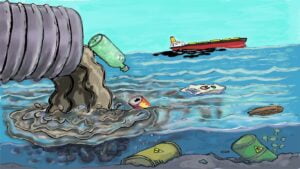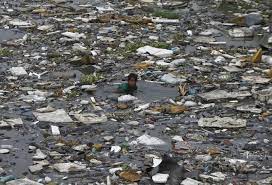Where does water pollution come from? There are several sources of water contamination. They include industry, agriculture, transportation and households.
The largest source of water contamination

The primary and most abundant source of pollution is industrial wastewater. These are pollutants from the manufacturing process in factories and industrial plants. This is a problem of all industrialized countries, but in Poland there is an additional problem. Many factories still find it more profitable to pay fines for pouring sewage into rivers than to treat it. However, factories not only dispose of sewage, but also generate dust, e.g. emitted by chimneys. If we were to spread that dust evenly on the surface of Poland, its layer would be up 9cm high. What happens to this dust? It gets into the ground, rivers and our lungs.
Other known sources of water pollution
Another type of pollution is agricultural wastewater. This is the stuff used for soil fertilization and pest control. The latter is dealt with by farmers using pesticides. These chemicals are dangerous not only to the pests that destroy plants – rodents, snails, insects or fungi – but also to humans. We talk more about how pesticides get into water in our article on these chemicals. The next culprit responsible for water pollution is road transportation. This especially applies to the engine oils that are poured into rivers as well as to the exhaust fumes that get into precipitation.
People also pollute water

We are not blameless either. The cosmetics and cleaning products we use such as soaps, washing powders, shower gels, cleansers and dishwashing products go directly into the waste water. It then flows into rivers. In addition, medicines whose ingredients disappear in a household toilet follow the same path to our waterways. Moreover, our garbage is also to blame. As a result, the water that flows through landfills reaches the ground and rivers unhindered.
Conclusion
To conclude, chemical contaminants in drinking water are a constant reality in industrialized countries. As a result, the water in our taps contains a lot of chemical compounds of various kinds. One of the most effective ways to remove them is to use a home reverse osmosis filter.

